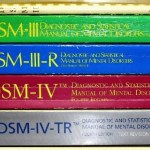neuroscience
BATS use sonar, or echolocation, to navigate complex environments, and also to forage and then accurately pinpoint the flying insects on which they prey. Insects in turn have evolved various counter-measures to evade capture. Some species have ears which are in tune to the echolocation signals, while others are capable of performing complex evasive flight maneuvers in response to the clicks produced by attacking bats.
Tiger moths have evolved the ability to produce ultrasonic clicks in response to attacking bats. However, the function of these clicks was unclear, although decades of research…
Why do some people lie much more frequently than others? A new study in PNAS indicates that consistently honest people don't have to struggle to overcome temptation—they simply don't feel it. Psychologists at Harvard scanned the brains of 35 volunteers while they predicted the outcome of a computerized coin toss game for money. In one trial, lying about their prediction after seeing the outcome could increase the total earned; in a second trial, all the volunteers were forced to tell the truth by calling the coin before the toss. By studying each person's reported predictions from both…
In neuroscience, we spend most of our time trying to understand the function of the "normal" brain -- whatever that means -- hence, we are most interested in the average. Under most occasions when scientists take an interest in the abnormal neurology, it is usually someone with who has something wrong with them -- has brain damage or a disorder of some kind. In these cases, we try and understand what brain functions they have difficulty performing as a way to understand what each part of the brain does (and hopefully to someday be able to help them).
The point is that when neurologists…
To me, and I suspect many readers, the quest for information can be an intensely rewarding experience. Discovering a previously elusive fact or soaking up a finely crafted argument can be as pleasurable as eating a fine meal when hungry or dousing a thirst with drink. This isn't just a fanciful analogy - a new study suggests that the same neurons that process the primitive physical rewards of food and water also signal the more abstract mental rewards of information.
Humans generally don't like being held in suspense when a big prize is on the horizon. If we get wind of a raise or a new job…
In a world where the temptation to lie, deceive and cheat is both strong and profitable, what compels some people to choose the straight and narrow path? According to a new brain-scanning study, honest moral decisions depend more on the absence of temptation in the first place than on people wilfully resisting these lures.
Joshua Greene and Joseph Paxton and Harvard University came to this conclusion by using a technique called functional magnetic resonance imaging (fMRI) to study the brain activity of people who were given a chance to lie. The volunteers were trying to predict the outcomes…
SWEARING occurs in most cultures - people swear to let off steam, or to shock or insult others. It is also a common response to a painful experience. We've all done it: after stubbing our toe, or hitting our thumb with a hammer, we draw a sharp breath and mutter a swear word. Until now, though, whether swearing actually alters our perception of pain had not been investigated. But according to a new study due to be published next month in the journal NeuroReport, swearing increases pain tolerance, enabling us to withstand at least one form of pain for longer.
Some pain theorists regard our…
Our mind often seems like a gigantic library, where memories are written on parchment and stored away on shelves. Once filed, they remain steadfast and inviolate over time, although some may eventually become dusty and forgotten.
Now, Reut Shema, Yadin Dudai and colleagues from the Weizmann Institute of Science have found evidence that challenges this analogy. According to their work, our memory is more like a dynamic machine - it requires a constant energy supply to work. Cut the power and memories are lost.
Shema found that the plug that powers our memories is an enzyme called PKMzeta…
IN the 1860s, the French physician Paul Broca treated two patients who had lost the ability to speak after suffering strokes. When they died, he examined their brains, and noticed that both had damage to the same region of the left frontal lobe. About a decade later, neuropsychiatrist Carl Wernicke described a stroke patient who was unable to understand written words or what was said to him, and later found in this patient's brain a lesion towards the back of the left temporal lobe.
Thus was established the classical neurological model, in which language is localized to two specific…
The "Revelation" as described by St. John, though likely inspired through the
use of hallucinogens (see The Mystery of Manna).
The title for this post comes from a terrific book by the neuroscientist Antonio Damasio, but I think it's appropriate for a discussion on faith, feeling and reason. Francis Collins' nomination as Director of the National Institutes of Health has effectively gotten people talking about religion, science and what, if anything, each should have to do with the other. I recently brought up Sam Harris' critique of the editor's at Nature for their praise of Collins' book…
Wow. . . coming off the Silence is the Enemy rape awareness initiative, it's more depressing than usual to see the Telegraph's latest bad science reporting. Their story implies that rape victims deserve blame for what happens to them:
Women who drink alcohol, wear short skirts and are outgoing are more likely to be raped, claim scientists at the University of Leicester (source).
Ben Goldacre of the excellent Bad Science blog didn't think so. So he tracked down the (student) author of the (unpublished) (MS) dissertation cited by the Telegraph. She said the article was completely wrong:
"We…
THE human brain is a true marvel of nature. This jelly-like 1.5kg mass inside our skulls, containing hundreds of billions of cells which between them form something like a quadrillion connections, is responsible for our every action, emotion and thought.
How did this remarkable and extraordinarily complex structure evolve? This question poses a huge challenge to researchers; brain evolution surely involved thousands of discrete, incremental steps, which occurred in the mists of deep time across hundreds of millions of years, and which we are unlikely to ever fully understand.
Nevertheless,…
Okay, Jonah saw this first -- but in case you missed it there, here's a snip from Jon Stewart interviewing Oliver Sacks about music and the brain.
This is a nice meeting. I've not met Stewart, but I had the pleasure to spend some time with Sacks while working on a couple stories, and he once gave me a book about Alexander Agassiz because he liked my book about Agassiz -- and I'm happy to see him exert his usual charm and humor here in this Stewart segment.
The Daily Show With Jon Stewart
Mon - Thurs 11p / 10c
Oliver Sacks
thedailyshow.com
Daily Show Full Episodes
Political…
. . . at least according to a Japanese researcher, who trained them to differentiate "bad" and "good" children's art.
According to New Scientist,
This isn't Watanabe's first efforts to teach art appreciation to pigeons. In 1995, he and two colleagues published a paper showing that pigeons could learn to discriminate Picasso paintings from Monets - work that earned him that year's Ig Nobel prize. New Scientist plays no role in selecting winners, but Watanabe's latest study make a strong case for another award.
Zing.
Of course, Watanabe first had to determine what was "good" or "bad" art.…
THE term 'hypnosis' was coined by the Scottish physician James Braid in his 1853 book Neurypnology. Braid defined hypnosis as "a peculiar condition of the nervous system, induced by a fixed and abstracted attention of the mental and visual eye". He argued that it was a form of "nervous sleep", and tried to distinguish his theory from that of the mesmerists, who believed that the effects of hypnosis were mediated by a vital force, or animal magnetism.
Because of mesmerism, and its association with stage entertainment and charlatanry, hypnosis was regarded with skepticism for much of its…
This may be the best BBC story EVER. Seriously:
Australian wallabies are eating opium poppies and creating crop circles as they hop around "as high as a kite", a government official has said."We have a problem with wallabies entering poppy fields, getting as high as a kite and going around in circles," Lara Giddings told the hearing. "Then they crash," she added. "We see crop circles in the poppy industry from wallabies that are high."
I have nothing to add. At a complete loss here. I can't even come up with a bad pun.
PS - Oops, I forgot to say this was courtesy of reader Jake! Thanks Jake…
PhysioProf commented about this back in 2006 after Alex Palazzo 's
post,
href="http://scienceblogs.com/transcript/2006/12/silent_mutations_inactivates_p.php">A
silent mutation affects pain perception? That post discussed
mutations that affect pain perception. Now, there is a bit
more information available about potential commercial developments
stemming from this line of genetic research.
href="http://www.bloomberg.com/apps/news?pid=20601109&sid=aC2haw8NOHW0">Firewalker's
Faulty Gene May Shake Up Market for Painkillers
By Dermot Doherty
June 25 (Bloomberg)
…
I'm here in DC at the Newseum for the State of Innovation Summit, a collaboration between SEED and the Council on Competitiveness. The crowd is pretty awesome - right now Adam Bly, SEED's CEO, is sitting a few rows from me with E.O. Wilson. Earlier, Wayne Clough, Secretary of the Smithsonian Institution, talked about a conversation he'd had recently with Steven Chu about using the Smithsonian's resources to enhance public understanding of climate change. As he spoke, the intense sunshine of a summer day in DC played across the Smithsonian castle turrets directly behind him (the seventh floor…
In martial arts classes, students are often taught to treat weapons as extensions of their own body. But this is more than just a metaphor. It turns out that when we use tools - not just swords and spears, but toothbrushes and rakes as well - our brain treats them as temporary body parts.
According to some psychologists, our brains rely on a mental representation of our bodies called the "body schema", which allows us to coordinate our various parts and to interact with the world around us. Now, Lucilla Cardinali from INSERM, France has found that we incorporate tools into this mental plan…
An amazing find from Street Anatomy. Vanessa's team has outdone themselves scouting this one - wish we knew more about its creator!
Update: Vanessa at Street Anatomy did find the creator, Elmer Preslee Industries. And you can view their flickr set here (thanks @TheDarkEngine).



